by Diahan Southard | Apr 12, 2017 | 01 What's New, Genealogy Gems Podcast
The Genealogy Gems Podcast
Episode 202
Lisa Louise Cooke

Highlights of this episode include:
- AncestryDNA’s new Genetic Communities: An Interview with Catherine Ball, Ancestry’s Chief Scientific Officer;
- Meet contestant Joe Greer from Relative Race, the genealogy reality show;
- The new Genealogy Gems Book Club featured title: a novel from an internationally best-selling author
- A botched reference to the 1950 census in a Stephen King novel?and 5 tips for counting down to the 1950 census release in exactly 5 years
- Naming traditions tip from a listener
- Lisa’s Google search strategies: search operators, YouTube and more
NEWS: ANCESTRYDNA GENETIC COMMUNITIES
Ancestry.com rolls out AncestryDNA Genetic Communities
FREE VIDEO: Introducing AncestryDNA Genetic Communities
Genealogy Gems Podcast episode 201 about new AncestryDNA study
NEWS: MYHERITAGE CONSISTENCY CHECKER
Access by logging in to your MyHeritage account and find this tool under the Family Tree dropdown menu:
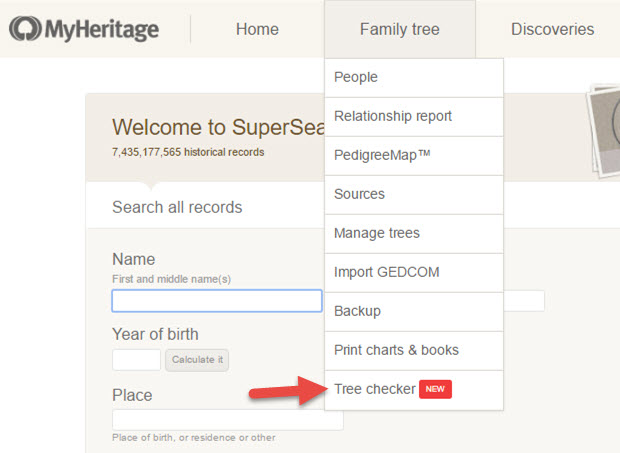

This podcast is sponsored by:


MyHeritage.com is the place to make connections with relatives overseas, particularly with those who may still live in your ancestral homeland. Visit www.MyHeritage.com
A Similar Tool: RootsMagic Problem Search
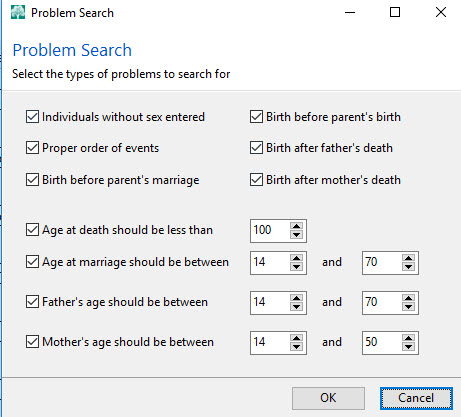

In RootsMagic, find it under the Tools menu. Select Problem Search, then Problem List to select the different kinds of problems you can have RootsMagic identify for you and to choose what age ranges you decide are out of bounds for a new father or mother.
Thank you to our podcast sponsors:



MAILBOX: NAMING TRADITIONS

Norwegian naming traditions tip from a listener
Irish naming conventions mentioned in this Q&A with Irish expert Kate Eakman
Mexican Genealogy Guide by David A. Fryxell
2 more places to find naming traditions:
Google search: for the name of the country or ethnic group, plus naming traditions
FamilySearch Wiki
MAILBOX: GOOGLE SEARCH OPERATOR TIP: “Oppenheim the butcher, NOT the bomb!”
FREE VIDEO TUTORIAL:
Speak Google’s Language: Google Search Operator Basics
The Genealogist’s Google Toolbox, 2nd edition by Lisa Louise Cooke

MAILBOX: STEPHEN KING AND THE 1950 CENSUS
To search inside books in Amazon:

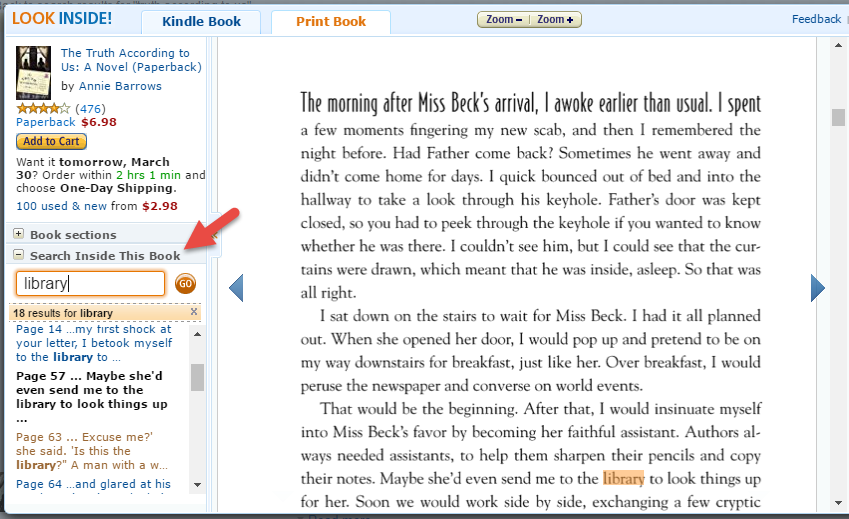

INTERVIEW: JOE GREER ON RELATIVE RACE
Meet Team Black: Joe and Madison Greer of Portland, OR

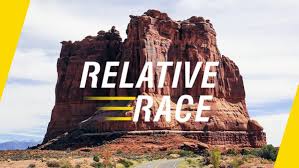
Relative Race: “What happens when genealogy meets reality TV? Using their DNA as a guide, contestants embark on the ultimate road trip across America, completing challenges and meeting unknown relatives along the way.”
Click here to watch past episodes online for free. The last two episodes of season two, 9 & 10, will air back to back respectively at 7pm MT/9pm ET and 8pm MT/10PM ET on Sunday, April 30.
Click here to learn more about the show
BONUS CONTENT FOR GENEALOGY GEMS APP USERS
Free PDF summary of 8 top genealogy TV shows from the past several years and where you can watch them online?a few of them for free, including Relative Race.
The Genealogy Gems app is FREE in Google Play and $2.99 for Windows, iPhone and iPad users.
INTERVIEW: Catherine Ball, Chief Scientific Officer, Ancestry.com
About Catherine Ball: Chief Scientific Officer at Ancestry
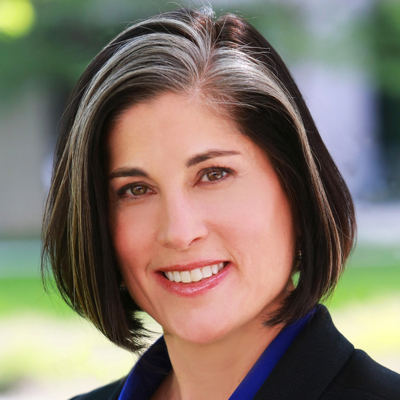
FREE VIDEO DEMO: Introducing AncestryDNA Genetic Communities
Study using AncestryDNA data identifies group migration patterns
Thanks to Your DNA Guide Diahan Southard for joining us to talk about this new development in genetic genealogy. Click here to learn more about Diahan’s how-to DNA video tutorials and personal consultation services for solving your family history mysteries with DNA.
GENEALOGY GEMS BOOK CLUB
New featured title: The Whole Town’s Talking by Fannie Flagg
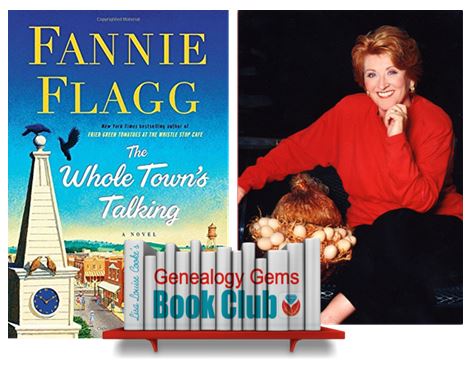 A multi-generational novel about a Swedish immigrant and the town he builds in the American Midwest by luring other Swedish settlers and a mail-order bride. As characters die, they take up residency in the local cemetery and continue to comment on the activities and people of the town.
A multi-generational novel about a Swedish immigrant and the town he builds in the American Midwest by luring other Swedish settlers and a mail-order bride. As characters die, they take up residency in the local cemetery and continue to comment on the activities and people of the town.
Also recommended by Fannie Flagg: The All-Girl Filling Station’s Last Reunion
New from past Book Club authors:
The Missing Man by Nathan Dylan Goodwin, a novella in his popular Forensic Genealogist series
Everyone Brave is Forgiven by Chris Cleave is now available in paperback
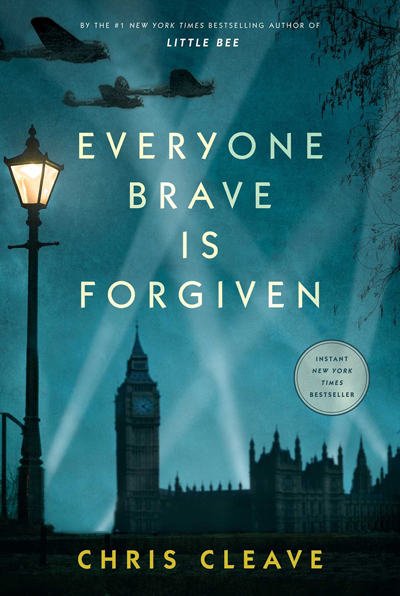
PROFILE AMERICA:
THE LOUISIANA PURCHASE
PRODUCTION CREDITS
Lisa Louise Cooke, Host and Producer
Sunny Morton, Editor
Diahan Southard, Your DNA Guide, Content Contributor
Lacey Cooke, Service Manager
Vienna Thomas, Associate Producer

Check out this new episode!
by Lisa Cooke | Aug 28, 2017 | 01 What's New, Google, Google Earth, Listeners & Readers, Maps, Memory Lane |
Ever thought of visiting your childhood home? Here’s a story about people who are actually buying theirs back. For the rest of us, here’s how to use Google and Google Earth to revisit your childhood home and relive some memories–without spending a dime.
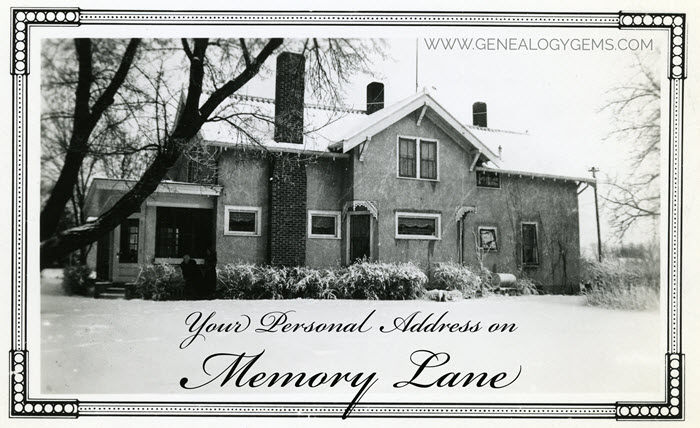
Your childhood home–or perhaps another beloved family home–is your own personal address on Memory Lane. Who wouldn’t love to stroll up to its doors and recapture some memories?
The image above is of my husband’s great grandfather’s home in Winthrop, Minnesota. It’s a home that I have many photos of, have researched, and have come to feel personally connected to although I’ve never seen it in person. It’s one of many ancestral homes that I yearn to visit one day. So as you can imagine, I really enjoyed this report from The Wall Street Journal about a few lucky folks who are living the dream of not only visiting, but owning and restoring, their childhood home.
Even if you’re not interested in buying back an old family home, many of us are curious about the houses we used to love. Are those houses still there? What do they look like now? What else can we learn about them?
Let’s explore three ideas to help you stroll down memory lane. Then, I’ll share a discovery from a Genealogy Gems Premium podcast listener who recently dropped me a line.
1. Find the address for your childhood home
If you don’t recall the street address of your favorite family home, ask a relative or look it up. For U.S. addresses since 1940, you might start with the U.S. Public Records Index, searchable in part or full at Ancestry.com (volumes 1 and 2 for 1950-1993), FamilySearch.org or MyHeritage.com (click here to learn more about that database). Look also in records such as:
For U.S. addresses from 1880-1940, look to U.S. census records, which include street names and house numbers. In the example below from the 1930 census, you can see “Cedar Street” written vertically by the red arrow, and the house number written for each household entry, as shown in blue.
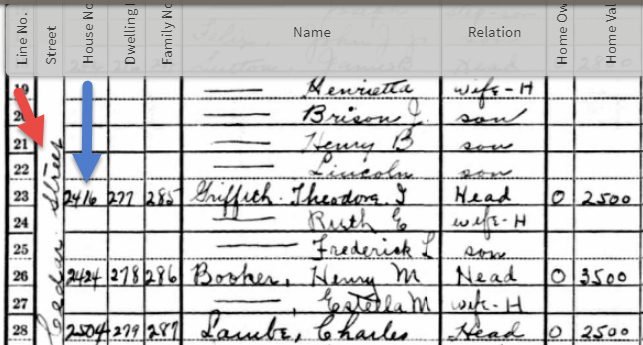
From the 1930 US census, Ancestry.com.
If you can’t find an address on an old record, but you think you could navigate yourself there on a map, it’s time to go to Google Earth and fly yourself there!
2. Use Google Earth to view your childhood home now
Google Earth is your on-ramp to your own personal Memory Lane. Go to the site, enter an address, and watch yourself “fly” to that address. If you don’t know an exact address but you know where to look, enter a street name or even a city. Then zoom in to the neighborhood and street section of interest. Activate Street View, if it’s available. Not sure how to do that? Watch my free Google Earth for Genealogy Video Class to get started.
Once you’ve found the location, take a close look. Is the house still there? What does it look like now? How has the landscape changed? The neighborhood?
You can use Google Earth to revisit your own childhood home or another family landmark, such as an ancestor’s homestead or burial place. (Click here to read about one genealogist’s virtual trip to an ancestor’s business using Google Earth’s Street View, and click here to see how another genealogist used historical map overlays in Google Earth to identify an old home’s location.)
3. Google the address of your childhood home
Googling the address of your family home may produce unexpected and interesting results like these:
a) Sale listings. If your house has been on the market in recent years, you may be able to find a listing with great details, and even pictures of the inside today. Top Google search results from specific addresses often bring up real estate websites with varying degrees of information, such as square footage, current estimated value, year built, most recent sale date and price, and more. Weed through these entries to see whether Zillow or another similar site shows a current or past listing for sale or rent. These may contain more details and may even have interior and exterior pictures of the house as it is now.
Watch closely—Google may bring up houses nearby, not the one you’re looking for. But even a neighborhood listing for a house built on a similar floor plan may jog your memories of the home and may give you a sense of what the area is like now.
b) Historical information. A Google search result may bring up historical news coverage or obituaries from digitized newspaper websites like Newspapers.com (a subscription may be required to view these in full). Or you may find something really fascinating, like a discovery made by Genealogy Gems Premium member Heather. After listening to me talk about this subject in Premium Podcast episode 141 (click here to subscribe), Heather wrote me this email:
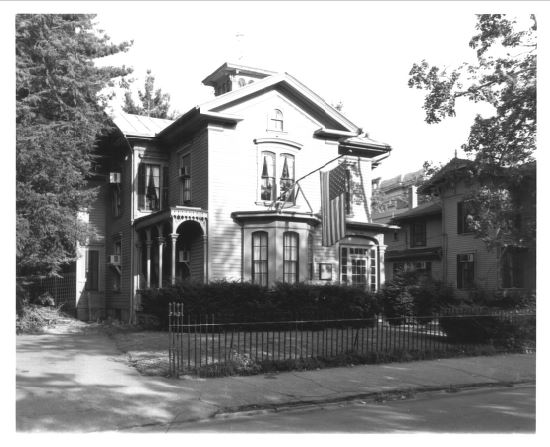 “I love listening to the podcasts while driving to and from work, often sharing my own thoughts with you. This happened yesterday while listening to the latest Premium Podcast episode on family homes. I decided that I had to write and share what I managed to find! Since I have deep family roots in Connecticut back to 1650s, I managed to find a few family homes, but I started searching with the more recent generations and addresses that I knew. The two homes where my great-grandparents (Inez Hart and John Milton Burrall) and my great-grand aunts (Mary and Lucy Burrall) lived were written up in an application for the National Register of Historic Places!
“I love listening to the podcasts while driving to and from work, often sharing my own thoughts with you. This happened yesterday while listening to the latest Premium Podcast episode on family homes. I decided that I had to write and share what I managed to find! Since I have deep family roots in Connecticut back to 1650s, I managed to find a few family homes, but I started searching with the more recent generations and addresses that I knew. The two homes where my great-grandparents (Inez Hart and John Milton Burrall) and my great-grand aunts (Mary and Lucy Burrall) lived were written up in an application for the National Register of Historic Places!
The National Park Service is working on digitizing these applications. I found the application with a narrative description of the home and pictures of the interior and exterior. I have found other applications that have also included some genealogy of the family who lived in the home. Here is the website for the National Park Service and the database search page.”
Thanks for sending these in, Heather! And for sending along copies of the applications she found. The multi-page applications (more than 10 pages each!) include historical background on the buildings and former owners, as well as photos and site maps. Above is a photo–and below is an excerpt–from these applications.
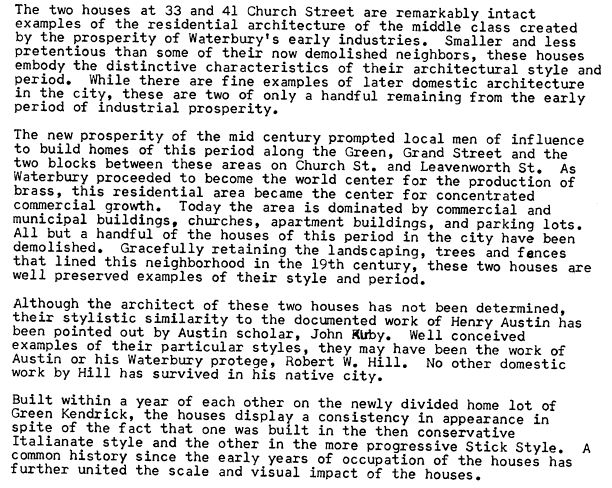
When you’re ready for a full-fledged Google education, take a look at my top-selling book, The Genealogist’s Google Toolbox, and my companion video tutorial series, Google Earth for Genealogy.
Disclosure: This post contains affiliate links and Genealogy Gems will be compensated if you make a purchase (at no additional cost to you) after clicking on these links. Thank you for supporting Genealogy Gems!
by Lisa Cooke | Aug 10, 2017 | 01 What's New, Genealogy Gems Podcast
The Genealogy Gems Podcast

with Lisa Louise Cooke
In this Blast from the Past episode:
Lisa reprises a favorite research detour into vehicle forensics to identify an old family car and shares tips for creating short family history books like those she given as holiday gifts to loved ones.
Hear letters from listeners on a special adoption discovery and a 1940 census mystery that now makes more sense.
Your DNA Guide Diahan Southard weighs in with 4 reasons to take a DNA test if you haven’t taken the plunge yet.
Genealogy Gems Editor Sunny Morton spotlights the current Genealogy Gems Book Club title, Murder in Matera.
The vehicle forensics and family book segments originally appeared in Genealogy Gems Podcast episodes 18 and 13, respectively, and are being republished here for web audiences.
MAILBOX: RICHARD ON THE 1940 CENSUS

1940 census tip: Listen in Genealogy Gems Episode 201 or read it on the Genealogy Gems blog.
Evidentia software helps genealogists organize and analyze their research discoveries. Free 14-day trial available.
MAILBOX: ADOPTEE DISCOVERY

Read the article here.
Tips for using DNA to solve adoption mysteries, taken from a conversation between genetic genealogy experts Your DNA Guide Diahan Southard and CeCe Moore from DNA Detectives.
Join our conversations on the Genealogy Gems Facebook page.
BONUS CONTENT for Genealogy Gems App

Get the app here.
If you’re listening through the Genealogy Gems app, your bonus content for this episode is an audio excursion with Lisa on an old railroad track up to a silver mine in the Colorado Rockies, an excursion she originally shared in Episode 18 of the Genealogy Gems Podcast, not now available online, and is being republished here exclusively for your enjoyment. The Genealogy Gems app is FREE in Google Play and is only $2.99 for Windows, iPhone and iPad users
GEM: MAKING FAMILY HISTORY BOOKS

Genealogy Gems Podcast episode 2 with a segment on transcribing diaries was republished as Genealogy Gems episode 134.
“A Nurse in Training, Part 1”
“A Nurse in Training, Part 2”

Qualities of a successful short family history book, from Lisa Louise Cooke
- The book conveys an overall theme.

Start by reviewing all the available material you have. That will give you a good sense of what the time period was like for your ancestor. You’ll also start to understand their goals, experiences, and emotions. Ultimately a theme should begin to surface.
In the case of A Nurse In Training, I wanted to communicate my grandmother as a young woman taking on a new adventure away from home that ultimately led to this warm, caring woman’s successful career as a nurse. I also tucked a bonus subplot in there of how she just happened to meet her husband at the same time!
You don’t need every scrap of research and every photo to get this theme across. It’s your job to be a sharp editor and to pick out the critical pieces. You want the words and photographs that clearly communicate your theme to the reader.
#2. The book can be read in one sitting.
Like it or not, if it takes too long read, they probably won’t. Strive to create a book that doesn’t look intimidating. I create books that are ten to twenty double-sided pages. People will be willing to pick up a thinner book off the coffee table. If it’s well done they’ll find that all of a sudden they’ve finished the entire book without wanting to put it down. The final goal is that they will walk away with a real sense of having gotten to know that ancestor.
#3. It contains the best of the best of what you have.
This goes back to conveying the theme and being a strict editor. My grandma had many funny stories, but there just wasn’t room for all of them. I picked the best of the best. Anyone who reads the book should hopefully come away with the fact that she had a sense of humor and could laugh at herself. So keep the content of your book focused, full of graphics and photos, and including the best of the best. If you can capture their interest in the first three pages, you’ll have them for the entire book.
#4. There are lots of photos and graphics.

A picture is definitely worth a thousand words. Since the number of words in this size book will be limited, photographs will be your best friend. If you’re lacking in family photos, many of my previous podcasts will give you countless ideas for locating associated photos. In A Nurse In Training, I included scanned images of skating rink tickets, programs and announcements from my grandma’s scrapbook, and journal pages in my grandmother’s own hand. These types of items really add texture and interest to your book, as well as help the reader to see that you’ve really done your homework.
#5. Keep it in chronological order.
This may seem obvious, but it’s easy to get sidetracked and start going back and forth in time. Believe me, for the reader’s sake keep things in chronological order. You as the researcher know this information backward and forwards, but this is probably your reader’s first exposure to it. Be gentle with them and keep it straight forward and simple. Your reader will thank you.
#6. You choose only high-quality images and printing.
High-quality glossy pages, good image quality and a hardcover binding all shout to the reader “I’m worth your time, read me!” For example, I found a drawing of Dameron Hospital where my grandmother worked, but it was a low-quality image and didn’t translate well in the book. As much as I wanted to include it, I ended up leaving it out. I’m glad I did; it wasn’t critical to the book and there were other ways to communicate the hospital to the reader.

Start creating fabulous, irresistible videos about your family history with Animoto.com. You don’t need special video-editing skills: just drag and drop your photos and videos, pick a layout and music, add a little text and voila! You’ve got an awesome video! Try this out for yourself at Animoto.com.
MyHeritage.com is the place to make connections with relatives overseas, particularly with those who may still live in your ancestral homeland. Click here to see what MyHeritage can do for you: it’s free to get started.
4 REASONS TO RSVP YOUR DNA INVITATION
with Diahan Southard, Your DNA Guide

I used to think that economics was just a series of numbers and calculations that helped to gauge the future growth of companies and countries. In a word: boring. But that was before I discovered that you can study the economics of people and essentially use math to describe human behavior, and therefore in some ways make that behavior more predictable.
This is of course especially intriguing to my current situation as the parent of a teenager, a pre-teen, and a daughter. Teenagers especially are always talking about the things that “everyone else has,” a phenomenon that Malcom Gladwell, one of these interesting people-economists, describes as the “tipping point.” He says that the tipping point is “the moment of critical mass, the threshold, the boiling point.” For my kids it’s everything from the point at which a party becomes fun to doing everything that is humanly possible to procure a fidget-spinner (if you don’t know what that is, ask the nearest 11 year old).
In DNA testing in the United States, that tipping point is now. We have reached the point where most genealogists at least have the passing notion that genetics can be useful in genealogy. Most genealogists (I would guess 85%) who attend the lectures I give have already had at least one DNA test completed. Let’s stop for just one minute and recognize how incredible that is! Not too long ago I was still trying to convince people that this was a good idea and that you didn’t have to dig up your ancestors to do it! But now we have scores of genealogists who have not only tested themselves, but have convinced half their family to test as well!
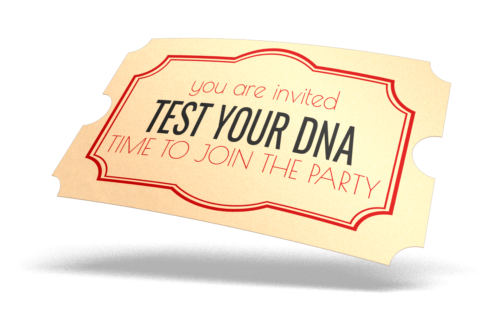
This got me thinking though, who are those people who haven’t tested? And why not? One category of people sans DNA test are those who have full pedigree charts. I have heard many of them say that they don’t see the need to do DNA testing since they have most of their lines “way back.” To those with the blessing of ancestors who kept better records than mine, I am offering four reasons why you should RSVP to your invitation to DNA test.
- Record. First and foremost, your DNA is a record. Just as you have obtained birth certificates and marriage licenses for your ancestors, your DNA is a unique record. It does represent you and your family in a way that no other record can. It is a document of your genetic history, and should be preserved. Further, while you may doubt the ability of your DNA to shed light on your current genealogy, don’t underestimate the contribution it might make in the future.
- Second Cousins. And third cousins, and fourth cousins, etc. Having your DNA tested means you can see a biological connection between you and other relatives that have had tested. For many, the idea of meeting or forming relationships with distant cousins is not appealing. But even if you have no intention of attending DNA family reunions or even in corresponding with these relatives, there is something reassuring about seeing them there on your match list. There is a certain thrill that comes with recognizing the connection between you and someone else. A connection that may not add any new names to your tree, but it helps you feel a deeper connection to your ancestor, and a greater appreciation for your biology.
- Verify. Which brings me to the next point. Seeing these cousins on your list can actually help verify the genealogy you have already collected and documented. It helps to reassure you that you have made the right steps along the way, and may help you gain additional resources about your relative through their descendants that you find on your match list. Resources that can help turn that ancestor from a name on a chart, to a story and a life worth preserving.
- Philanthropy. The last reason to go ahead and have your DNA tested is to help others. If you have been lucky enough to fill in most of the blanks on your tree, you can help others do the same by simply having your DNA tested. Your DNA provides a link to your tree that might be just what someone needs to overcome a brick wall in their family history.
So, if you have been hanging out on the outskirts of DNA testing because you feel like your tree is full enough without it, remember to RSVP to your invitation to be DNA tested, and join the party!
GENEALOGY GEMS BOOK CLUB: A FAMILY HISTORY MURDER MYSTERY!
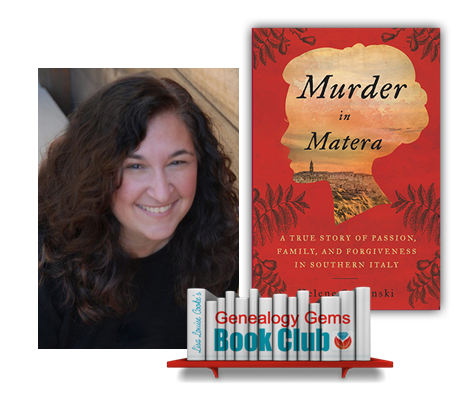
Murder in Matera: A True Story of Passion, Family, and Forgiveness in Southern Italy by journalist Helene Stapinski. A story of poverty and power, love, tragic decisions, and a courageous and desperate woman’s leap for a new life across the ocean.
Murder in Matera continues to unravel a past Helene explored in her fantastic first family history memoir, Five-Finger Discount: A Crooked Family History. Find a whole list of fabulous family history-inspired reading at the Genealogy Gems Book Club!

Lisa Louise Cooke uses and recommends RootsMagic family history software. From within RootsMagic, you can search historical records on FamilySearch.org, Findmypast.com and MyHeritage.com. RootsMagic is now fully integrated with Ancestry.com, too: you can sync your RootsMagic trees with your Ancestry.com trees and search records on the site.

Visit http://www.backblaze.com/lisa
Keep your family history research, photos, tree software files, videos and all other computer files safely backed up with Backblaze, the official cloud-based computer backup system for Lisa Louise Cooke’s Genealogy Gems. Learn more at http://www.backblaze.com/lisa.
GEM: VEHICULAR FORENSICS: Updated links, tips and resources
Here’s the original photo of my grandma next to her father’s car:

The original zoomed in image of the license plate:

The license plate with the “alternative light source” applied:

Since I first published this episode, iGoogle has gone away.
Websites for identifying old cars:
Hubcap Café.com: Collector Car Resources
Flickr group called Vintage Car Identification
From ItStillRuns.com: “Veteran cars were manufactured before 1903, vintage cars were made between 1903 and 1933, and classic cars are considered to be vehicles manufactured from 1933 until fifteen years ago.”
Learn more about ArchiveGrid in Premium Podcast episode 149 (Genealogy Gems Premium subscription required) and in this blog post: How to find original manuscripts and documents using ArchiveGrid.
The Genealogist’s Google Toolbox by Lisa Louise Cooke for Google searches and even YouTube:

Get the book here
“Take a ride in a 1928 Willys Knight made in, owned in and driven in Toledo, Ohio”
Forensic Files channel on YouTube
More updated resources:
“The Colorful History of California License Plates” in LA Magazine
WorldLicensePlates,com
California DMV license plate introduction
California State Archives
Willys Overland Knight Registry website and Facebook page
Inflation Calculator
TIP: Remember that you may be able to make great discoveries IN old photos with your photo editing software (even just with whatever free software is on your computer):
1. Open up the photo editing software
2. Open the photograph in question in the program
3. Use the trim feature to zoom in on the license plate?or whatever feature you want to focus on
4. Zoom in to make it easier to see
5. Try using both the Brightness and Contrast feature of your program in combination until you achieve a favorable result
6. Apply Auto Sharpen for further detail
Savvy tips to help identify old photos
Photo editing apps and software for family history
The Photo Detective by Maureen Taylor is your ultimate guide to identifying old objects in pictures to help you learn more about your family history.
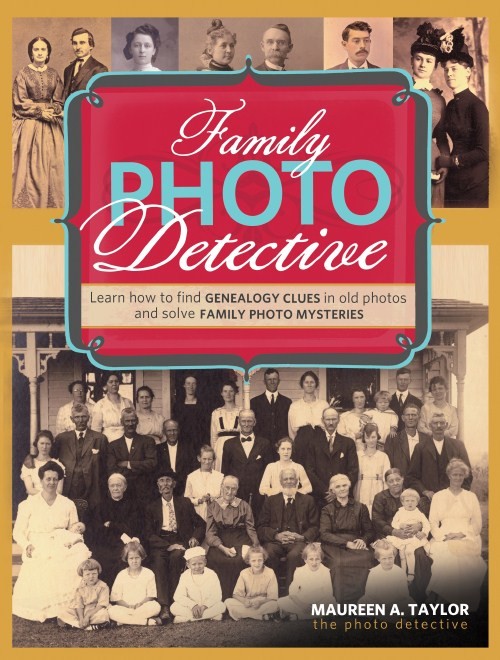
Get the book here
PROFILE AMERICA: FIRST TRAFFIC LIGHT

PRODUCTION CREDITS
Lisa Louise Cooke, Host and Producer
Sunny Morton, Editor
Diahan Southard, Your DNA Guide, Content Contributor
Hannah Fullerton, Production Assistant
Lacey Cooke, Service Manager
Check out this new episode!













 A multi-generational novel about a Swedish immigrant and the town he builds in the American Midwest by luring other Swedish settlers and a mail-order bride. As characters die, they take up residency in the local cemetery and continue to comment on the activities and people of the town.
A multi-generational novel about a Swedish immigrant and the town he builds in the American Midwest by luring other Swedish settlers and a mail-order bride. As characters die, they take up residency in the local cemetery and continue to comment on the activities and people of the town.











 “I love listening to the podcasts while driving to and from work, often sharing my own thoughts with you. This happened yesterday while listening to the latest Premium Podcast episode on family homes. I decided that I had to write and share what I managed to find! Since I have deep family roots in Connecticut back to 1650s, I managed to find a few family homes, but I started searching with the more recent generations and addresses that I knew. The two homes where my great-grandparents (Inez Hart and John Milton Burrall) and my great-grand aunts (Mary and Lucy Burrall) lived were written up in an application for the National Register of Historic Places!
“I love listening to the podcasts while driving to and from work, often sharing my own thoughts with you. This happened yesterday while listening to the latest Premium Podcast episode on family homes. I decided that I had to write and share what I managed to find! Since I have deep family roots in Connecticut back to 1650s, I managed to find a few family homes, but I started searching with the more recent generations and addresses that I knew. The two homes where my great-grandparents (Inez Hart and John Milton Burrall) and my great-grand aunts (Mary and Lucy Burrall) lived were written up in an application for the National Register of Historic Places!






















